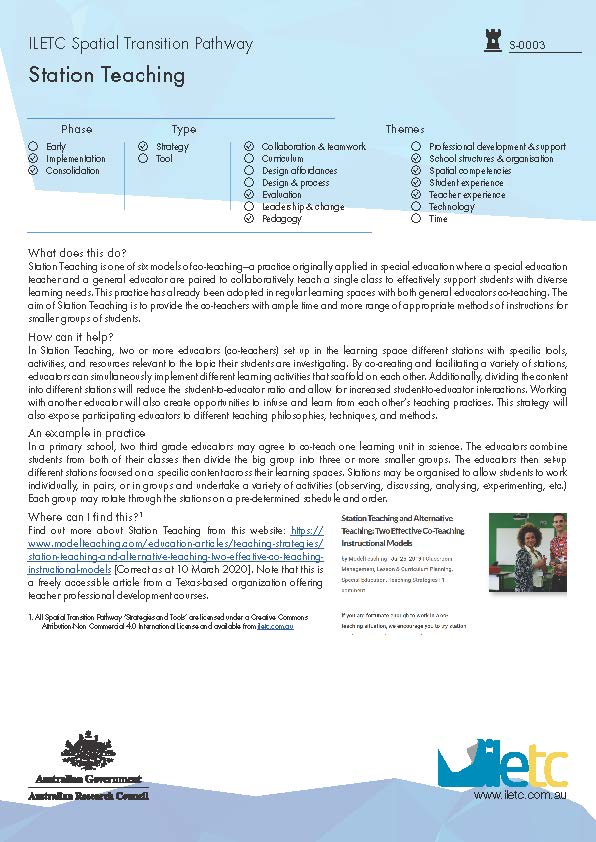| Introduction | Wayfinding activity | Spatial typologies | Spatial transition case studies | Spatial transition resources |
Spatial Transition Pathway
The Spatial Transition Pathway provides a framework for the strategies and tools which support teachers to make the journey of change into innovative learning environments. Strategy is defined as an explicit concept, theory or practice that enhances teachers’ use of innovative learning environments. A tool is an identifiable activity or protocol, that implements a strategy. You can use the database to search for strategies and tools by temporal phase or transition theme(s). If you would like to contribute a strategy or tool, please contact the ILETC team.
Station Teaching
Station Teaching is one of six models of co-teaching—a practice originally applied in special education where a special education teacher and a general educator are paired to collaboratively teach a single class to effectively support students with diverse learning needs. This practice has already been adopted in regular learning spaces with both general educators co-teaching. The aim of Station Teaching is to provide the co-teachers with ample time and more range of appropriate methods of instructions for smaller groups of students.

